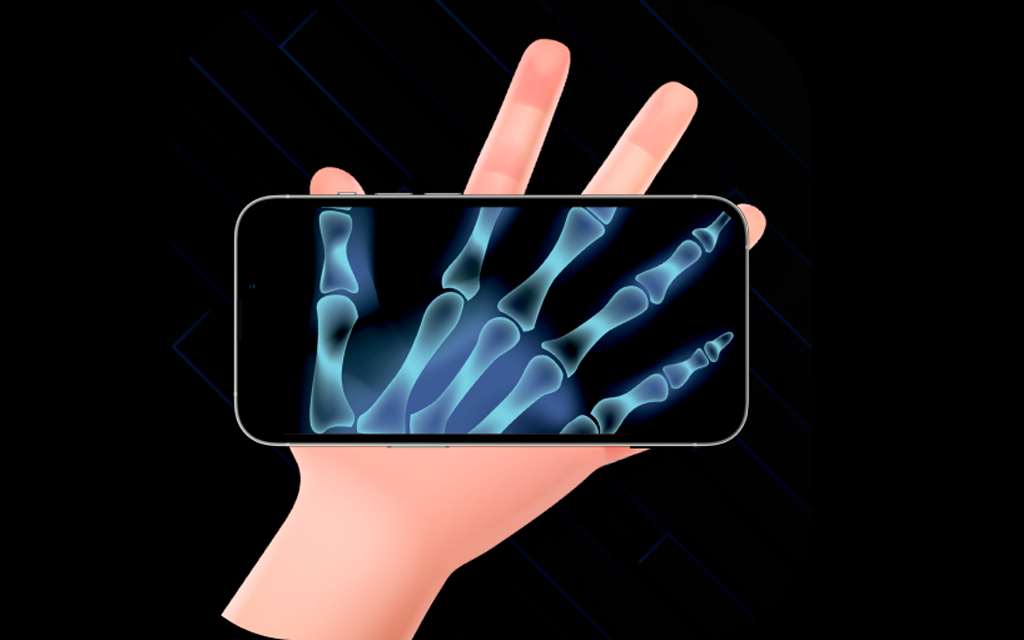The digital era has brought impressive innovations, and one of them is the ability to simulate X-ray images through applications. These applications, initially designed for entertainment, have evolved to become useful tools in various areas, such as education and healthcare. In this article, we explore the best X-ray simulation apps available on the market.
The fascination with seeing through objects has always intrigued humanity. With the advancement of technology, this curiosity can now be satisfied in a safe and educational way. These applications use advanced algorithms to create images that mimic the appearance of an X-ray, providing a unique experience for their users.
Best X-ray Simulation Apps
1. X-Ray Vision Scanner
The X-Ray Vision Scanner stands out for its intuitive interface and impressive results. This app uses the device's camera to create a convincing real-time X-ray simulation. It is particularly popular among medical students as it helps them understand human anatomy in a visually appealing way.
Functionalities
In addition to basic X-ray simulation, X-Ray Vision Scanner offers options to adjust the intensity and contrast of images. This allows for deeper customization, making it a versatile tool for both learning and entertainment.
2. Virtual X-Ray Simulator
Virtual X-Ray Simulator is known for its accuracy and realistic details. This app not only simulates X-ray images, but also offers a brief explanation about each part of the body being viewed, making it a valuable educational resource.
Functionalities
A unique feature of this app is its extensive library that includes different types of bones and organs, allowing users to explore different aspects of the human body in detail.
3. Realistic X-Ray Simulation
Realistic X-Ray Simulation is admired for its authenticity and ease of use. This app provides an almost real X-ray experience, with detailed and clear images.
Functionalities
The app offers options for viewing different parts of the body, including options for simulating specific medical conditions, making it a valuable learning tool for medical students.
4. X-Ray Body Scanner
X-Ray Body Scanner is popular among technology enthusiasts due to its innovative approach to X-ray simulation. The app is easy to use and provides fast and accurate results.
This application stands out for its ability to integrate augmented reality, providing a more immersive and interactive experience.
5. Advanced X-Ray Simulator
Advanced X-Ray Simulator is known for its high quality and advanced features. This application is often used by professionals for demonstration purposes due to its accuracy and detail.
Functionalities
It offers a range of customization options, allowing users to change numerous parameters to create the perfect X-ray simulation suited to their specific needs.
Exploring Features and Benefits
X-ray simulation apps are not just entertainment tools; they have significant educational value. They allow medical students and healthcare professionals to better visualize and understand human anatomy. Additionally, they are useful resources for explaining medical procedures and conditions to patients, making communication more effective.

FAQ – Frequently Asked Questions
Q: Are X-ray simulation apps accurate enough for medical diagnosis? A: No. Although the apps provide realistic images, they are not a substitute for professional medical diagnoses performed with real X-ray equipment.
Q: Are these apps safe to use with children? A: Yes, most of these apps are safe for all ages as they are primarily intended for educational and entertainment purposes.
Q: Can I use these apps to learn about specific medical conditions? A: While useful for educational purposes, these apps should not be used as an exclusive source of medical information. They are best used as complementary learning tools.
Conclusion
X-ray simulation applications offer a fascinating window into the world of medical imaging. They are versatile tools that serve for entertainment, education and even professional purposes in certain contexts. As technology continues to evolve, we can expect even more exciting developments in this field in the future.


